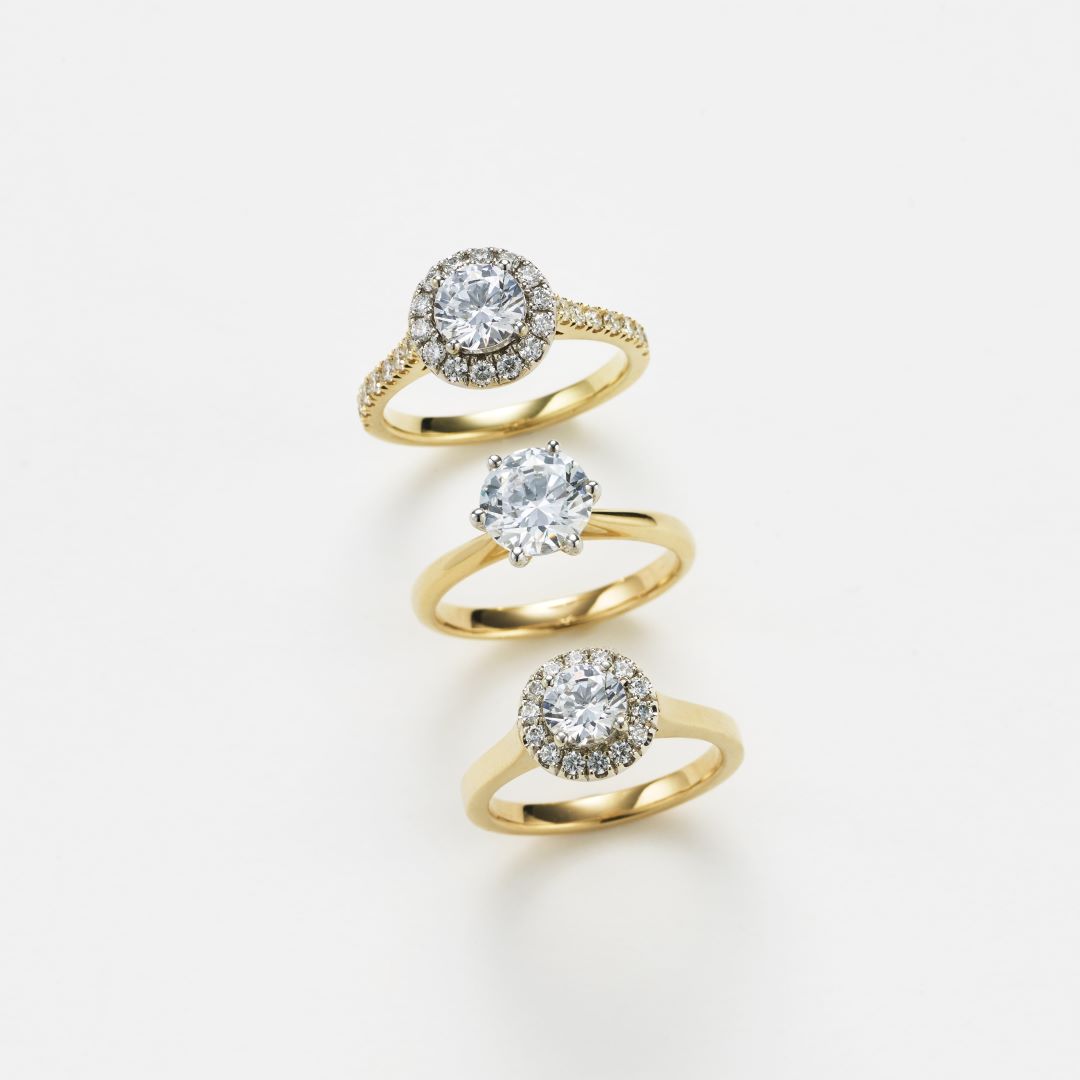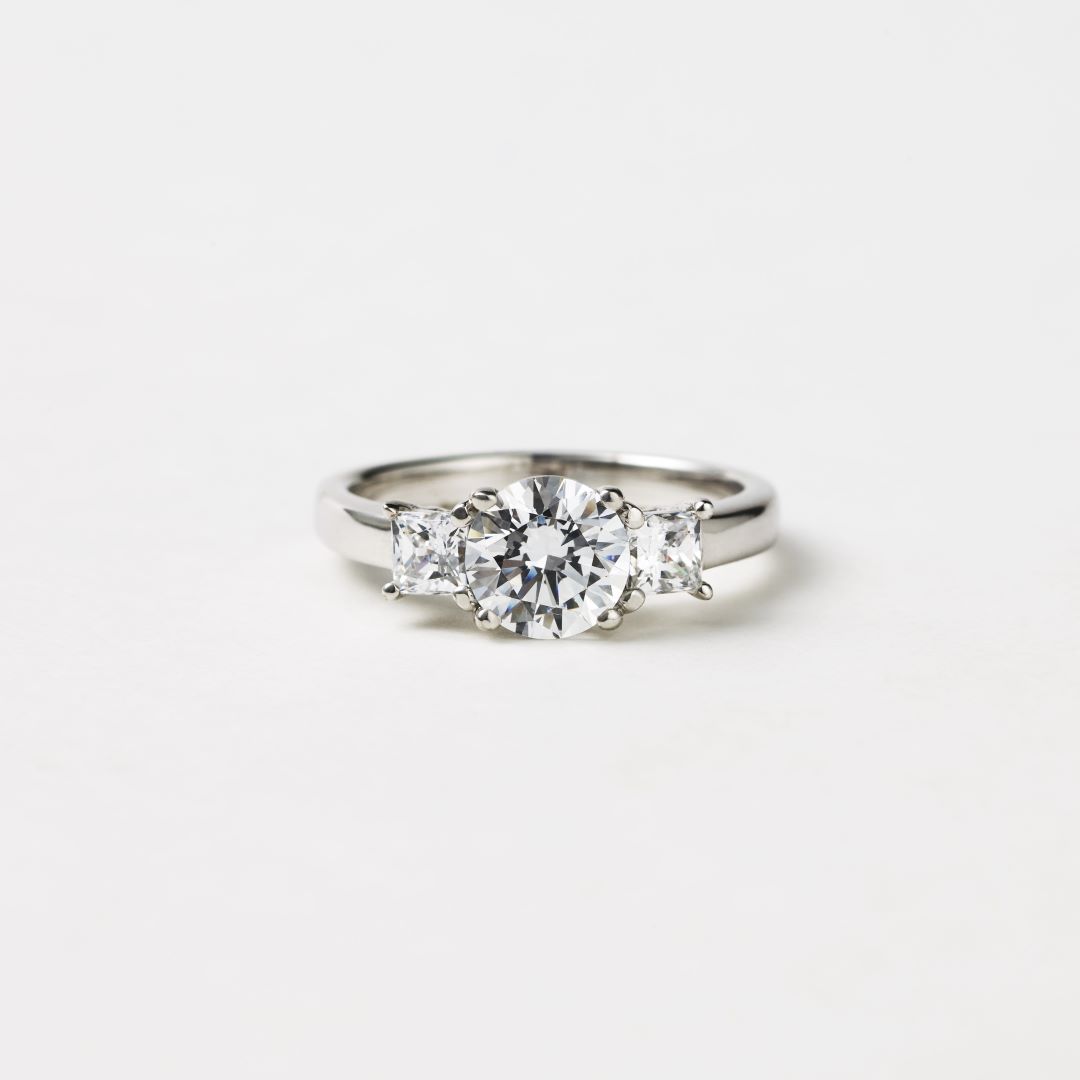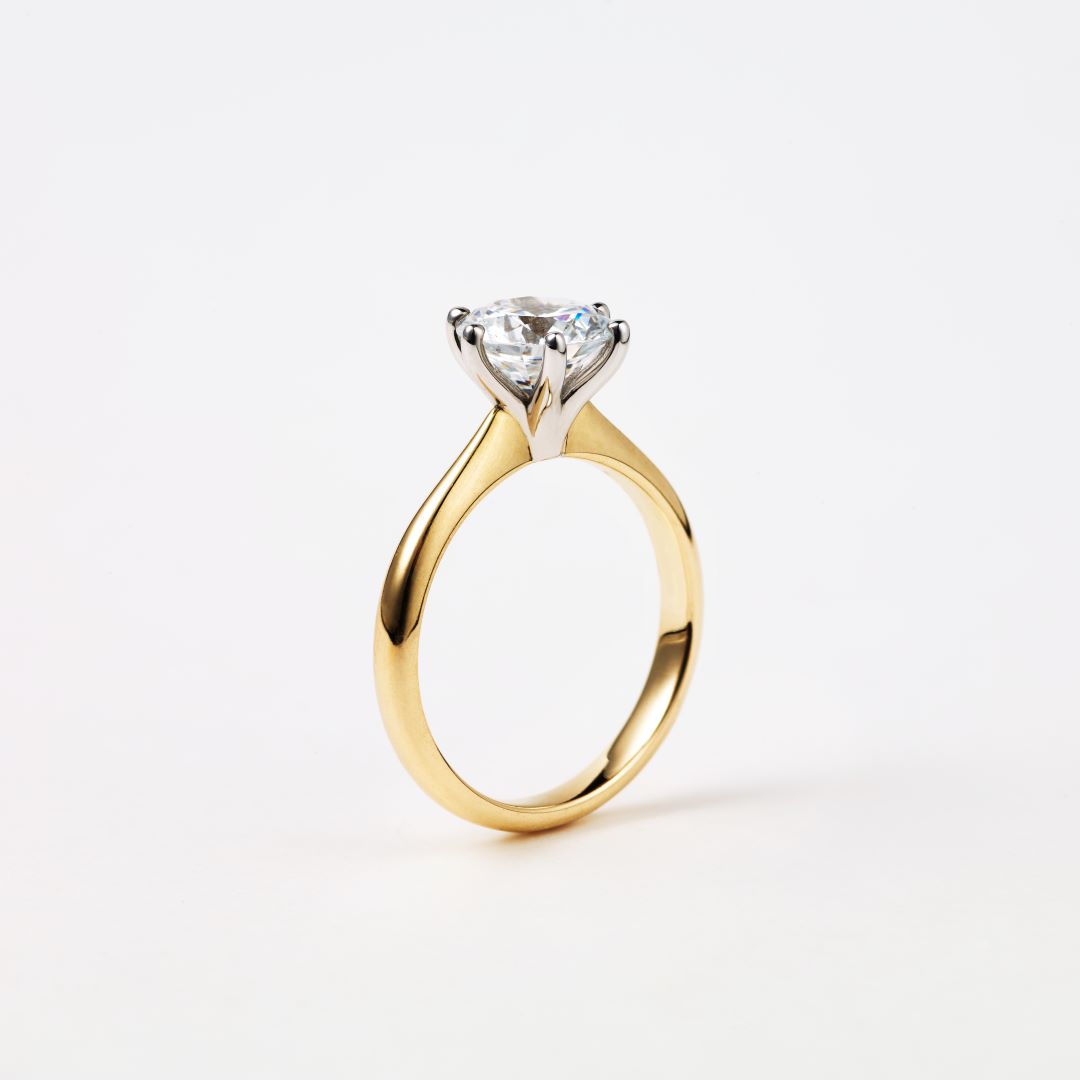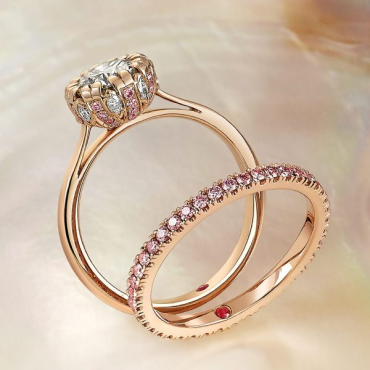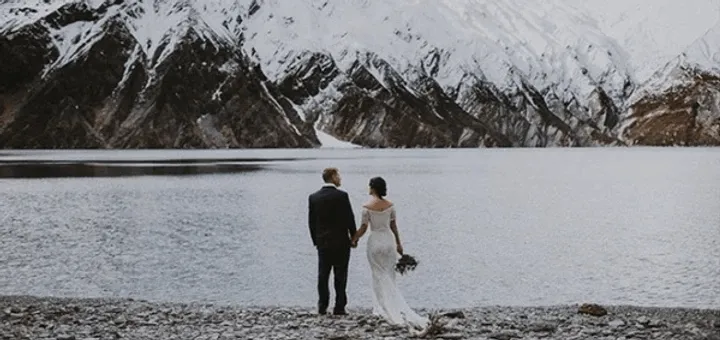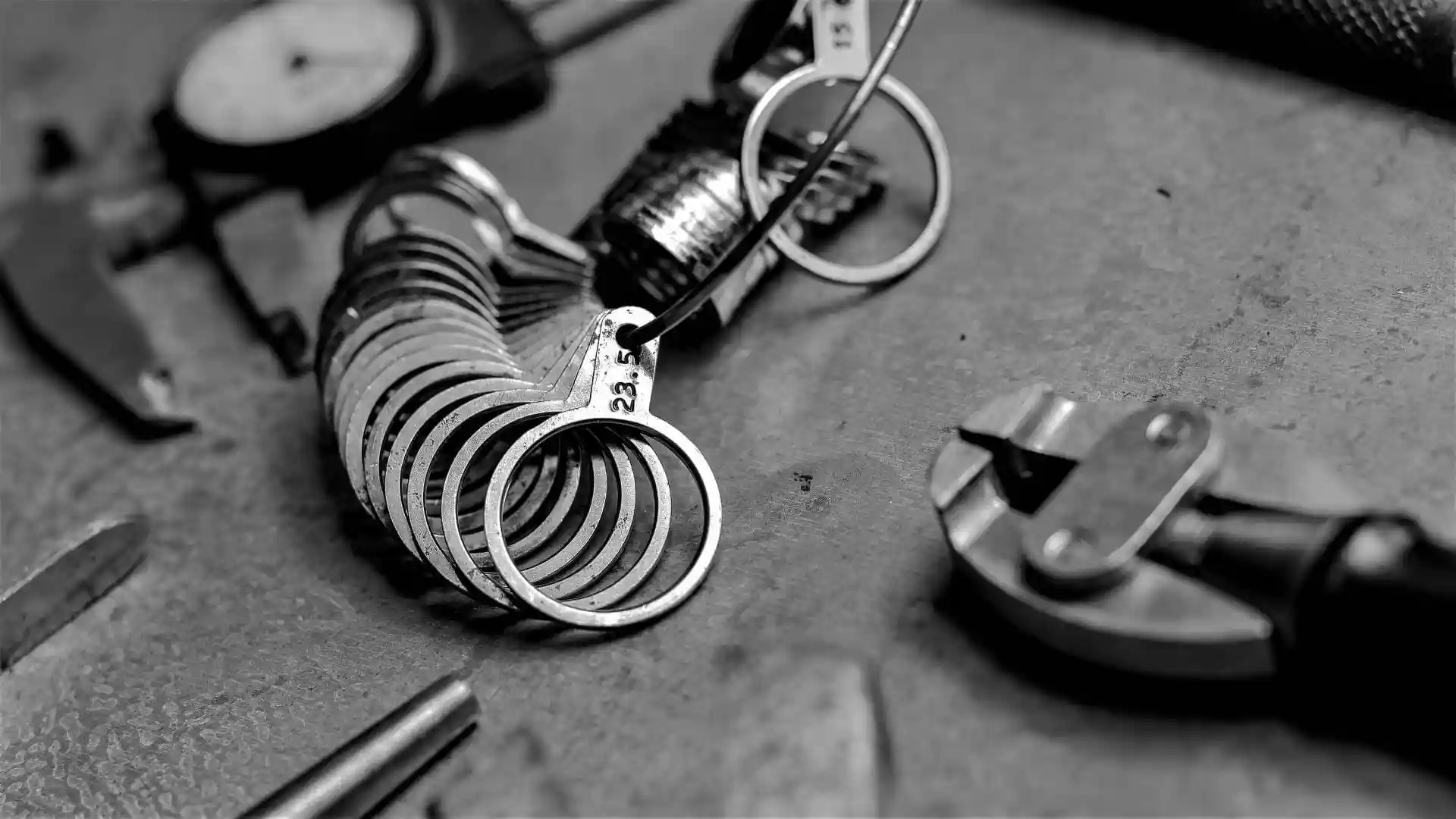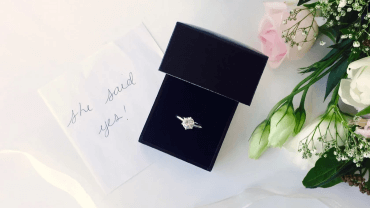Diamond Colour - The 4Cs of Diamonds
When you think about diamond colour, white (aka colourless) immediately comes to mind. However, when the Earth made diamonds eons ago, other elements (apart from carbon) sometimes came into play, resulting in diamonds that are lightly or vividly coloured.
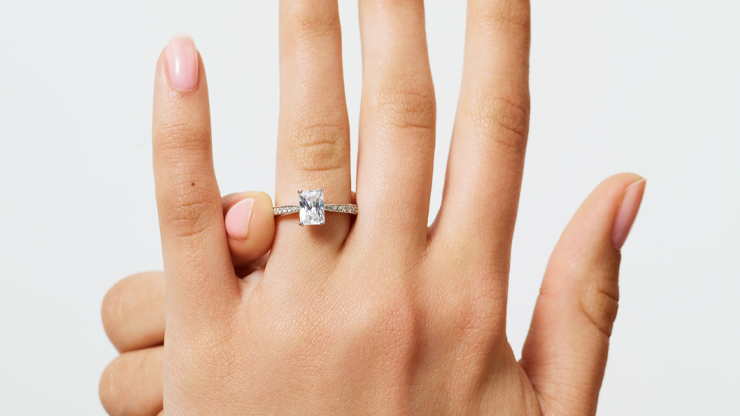
How are natural diamonds formed?
Natural diamonds (not manmade) were formed deep under the Earth’s crust more than three billion years ago. Intense heat and pressure caused carbon atoms to form crystals – and these are the diamonds that we know and love. Diamonds are found at a depth of 150 to 200km below the Earth’s crust, which is way too deep for mining, but they are brought closer to the surface by volcanic eruptions.
Sometimes other chemical elements – like nitrogen, boron and sulphur – interact with the carbon while the diamonds are being created. These interactions produce diamonds that are either faintly or brightly coloured.
Pink, purple and red diamonds are different, however. They are caused by a distortion in the diamond’s crystalline structure that causes light to reflect differently within the diamond.
Green diamonds are different too. During the crystallising process, radiation affected the carbon atoms in a way that made the diamond green.
How is diamond colour graded?
The diamond industry uses the Diamond Grading Scale for white diamonds, which grades diamonds from D to Z. Grade D means totally colourless; Z is pale yellow or brown. Nitrogen levels determine whether a white diamond is colourless or slightly yellow, so the most colourless diamonds have the least nitrogen.
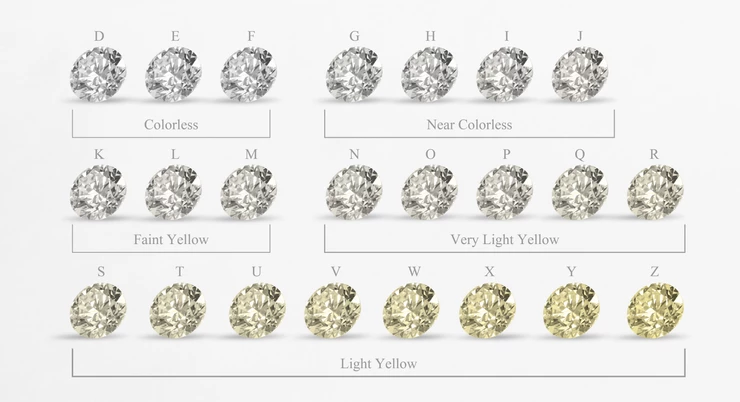
The white/colourless diamond colour scale:
D to F – colourless. To the untrained eye, D to F diamonds look very similar once they are made into jewellery.
G to J – near colourless. Choosing a diamond with this colour grade is a way to get more diamond for your money.
K to M – faint yellow. When seen alongside a diamond with a higher colour grade, a K to M diamond does look yellow. But it’s more affordable, so you could have a bigger stone for your budget.
N to Z – very light and light yellow. Less valuable than diamonds without colour, but often chosen because they are interestingly different.
Coloured diamonds colour grading
There is a separate diamond colour grading scale for true fancy-coloured diamonds. These brightly-coloured gems are graded as: Fancy Vivid, Fancy Intense, Fancy Deep, Fancy Dark, Fancy, Fancy Light, Light, Very Light and Faint. Generally, the stronger the colour, the more valuable the fancy-coloured diamond. Read more about diamond colour from GIA.
Which colour diamond is most valuable?
For white/colourless diamonds, stones that fall within the D to F colour grading range are considered the most valuable, because they are essentially colourless.
For fancy-coloured diamonds, red is the most valuable colour. In fact, red is the most expensive diamond colour in the world, because it is exceedingly rare. However, a red diamond is very different to a ruby. Diamonds are crystallised carbon; rubies are made from the mineral corundum, which is aluminium oxide.
What is the best colour for diamonds?
Because red diamonds are the most valuable, you could argue that red or pink is the best colour for diamonds – but only if you’re a billionaire. In the real world, most people want their diamonds to be colourless or white. When you’re choosing a diamond engagement ring or eternity ring, the best colour for you depends on what you like and how much you can afford. See a range of our diamond rings.
What is more important – diamond colour or clarity?
Experts recommend you prioritise colour over clarity, so it’s important to ask your jeweller what the diamond colour grade is (D to Z). Clarity, in case you’re unsure, refers to imperfections within the stone. Clarity has a separate scale – ‘flawless’ at the high end and ‘included’ at the low end.
What is the most famous diamond in the world?
The Hope Diamond is the most famous diamond in the world. It’s a rare blue diamond, so the carbon in the crystal has interacted with the element boron. The Hope most likely came from the Kollur mine in India.
Want to know more about diamonds?
This Diamond Colour article is part of: The Diamond Buying Guide - The 4Cs of Diamonds. Find out more about the most important things to consider when buying a diamond.
Let one of our Client Managers take you one step closer by guiding you through the process of choosing the perfect diamond for your engagement ring.
Book an appointmentwith us to get started.
EXPLORE ENGAGEMENT RINGS
At DOR we've made buying an engagement ring stress-free. Simply choose from our Collection, start with a proposal ring or customise one of our classic designs.
ENGAGEMENT RING COLLECTION
We've made it easy! Browse our designs, then tailor to your price point.
VIEW COLLECTIONMINED OR LAB GROWN DIAMONDS
The choice is yours! At DOR we offer both lab-grown and mined diamonds.
LEARN MORECUSTOM RINGS
Feeling creative? Tailor any ring in our Collection to suit your individual style
LEARN MORE